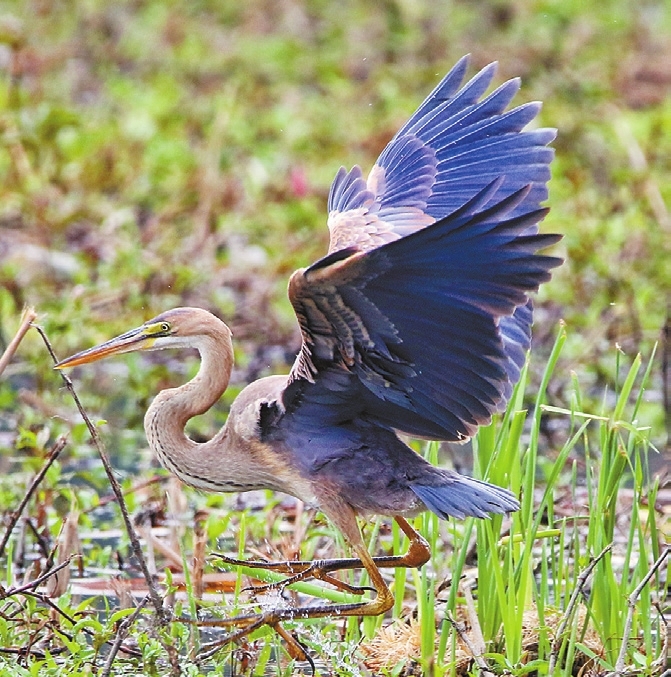
One of the rarest visitors to our city during the migration period is the enigmatic purple heron (Ardea purpurea), a big bird that may grow to 90 centimeters tall with an impressive wingspan up to 150 centimeters. Its unique coloration pattern attracts every birdwatcher in Shenzhen. The purple heron has a black-feathered crown with a couple of long plumes that wave as they walk. The lateral portions of the face and neck are of a beautiful orange coloration, and black stripes cross them. The throat is white, and the base of the wings is of a deep red; the belly is black with reddish streaks, the beak is long and yellow, and the eyes are also yellow. Their legs are long with a brown coloration in front and yellow in the back, but during the breeding season they become entirely orange. So many colors and patterns make their appearance unique, and the contrast of all those patterns conjures up a purplish impression that gives the species their name. This fascinating bird prefers open shallow wetlands with a lot of vegetation, where they remain most of the time. In winter, these shy migratory birds visit our city, where they forage for aquatic insects, crustaceans, fish and even smaller birds, lizards, and mammals. Their breeding season goes from April to June, but it may vary depending on their location and the climate conditions of their habitats. They nest in groups and lay up to six or seven eggs per clutch, which both parents incubate for about four weeks. Another five or six weeks will pass before the chicks become fully independent and can live on their own. Although these birds are not threatened globally, they are scarce in our city. If we want to keep welcoming this and other visiting species during their migrations, we need to take action to preserve wetlands and the natural environments of our city. | 
